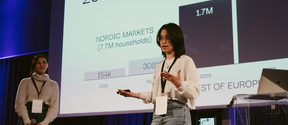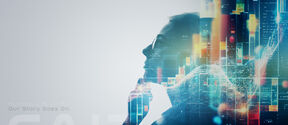First Aalto-2 signal received from Japan

The Aalto University satellite team can give a sigh of relief: The first signal from Aalto-2 was heard in Japan at 15.54 on 25 May.
‘The satellite release took place exactly according to the planned schedule. It was released from the International Space Station above the Pacific Ocean, and the satellite opened its antennae when it was close to South Africa. We received the first signal confirmation from Japan,’ explains Professor Jaan Praks, who is the project leader.
‘The letters AALTO2 in Morse code could be clearly heard in the signal recording, which made it easy to identify our satellite’s signal. We will probably get the first control connection to the satellite at midnight today when Aalto-2 is visible from Espoo,’ says Petri Niemelä, a student who operates Aalto University’s earth station.
Aalto-2 will take part in the international QB50 Mission, the aim of which is to produce the first ever comprehensive model of the features of the thermosphere, the layer between the Earth's atmosphere and space. The mission will involve dozens of nanosatellites, which were launched from the International Space Station in a satellite cluster into a low orbit on 25 May. The flock of satellites is intended to study the lower thermosphere, which is located at an altitude of 90–320 kilometres. As they pass through the thermosphere, the satellites will take measurements regarding, for example, plasma characteristics and particles in the upper atmosphere. Satellites usually pass through the thermosphere quickly, and a large group can collect a greater amount of more diverse information than a single satellite.
Aalto-2, which only weighs two kilogrammes, is carrying the multi-Needle Langmuir Probe (mNLP) payload developed at the University of Oslo for the measurement of the characteristics of plasma.
Aalto-2 will spend about six months in orbit, after which it and the other satellites participating in the mission will fall into the atmosphere and burn up due to friction.
The next exciting moment at Aalto University is the launch of Aalto-1. The Aalto-1 satellite has already arrived in India, where it will be launched with a PSLV rocket in June.
Stages of Aalto-2’s space journey
18 April: Launch from the space centre in Cape Canaveral in Florida.
22 April: The Cygnus cargo spacecraft carrying Aalto-2 and other nanosatellites docked at the International Space Station orbiting the Earth.
25 May: Aalto-2 was released into orbit from the International Space Station.
25 May: The first signal.
More information on satellite projects at Aalto (spacecraft.aalto.fi)
More information on the launch of the Aalto-1 satellite (aalto1.fi) What is Aalto-2 and what does it do? (youtube.com)
Video: How are CubeSats – like Aalto-2 – deployed from the International Space Station? (youtube.com)
Further information:
Jaan Praks
Professor, project director
Aalto University
Tel. +358 50 420 5847
jaan.praks@aalto.fi
Petri Niemelä
Head of the Otaniemi earth station
Aalto University
Tel. +358 50 400 4246
petri.niemela@aalto.fi
QB50 project has received funding from TEKES and the European Union’s Seventh Framework Programme for Research and Technological Development under grant agreement no [284427]. This publication reflects the views only of the authors, and the European Union cannot be held responsible for any use which may be made of the information contained therein.
Read more news

Aalto University to host INNOVA Europe 2026 Grand Final in Espoo
Aalto University will host the INNOVA Europe 2026 Grand Final in Espoo, bringing together leading student-led startups from European universities.
Finnish AI Region Secures Second Term with Top Marks from EU
Finnish AI Region (FAIR) EDIH has been selected to continue operations for a second term with excellent ratings. European Union continuation funding enables service expansion from the beginning of 2026. Aalto University is one of 10 partners in FAIR.
Business & economics and computer science ranked in top 100 globally
The Times Higher Education ranking measures universities with 18 indicators, including international research and citations






